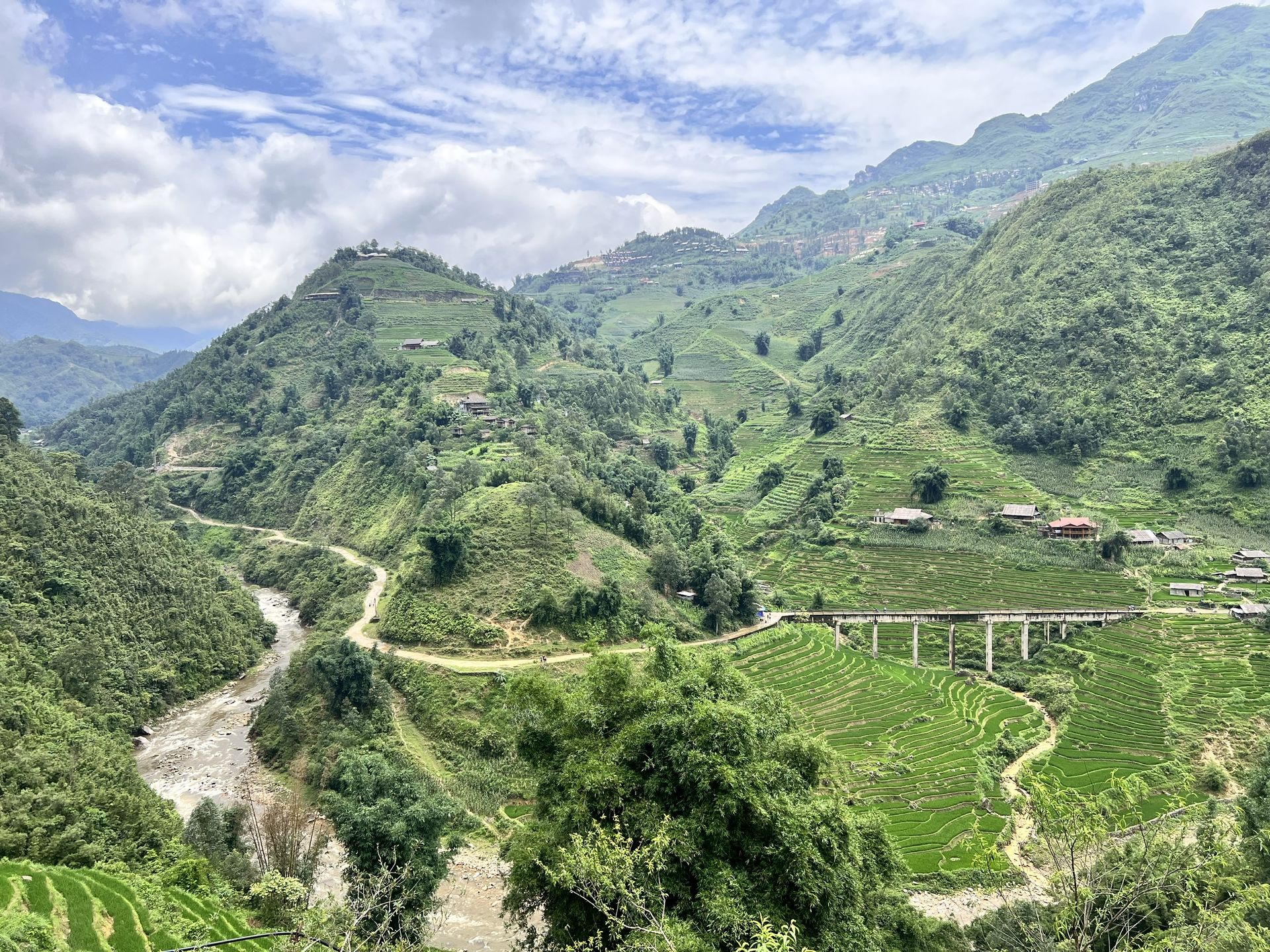High up in the misty mountains of northern Vietnam, the H’mong people have built a life deeply connected to the land. Walking through the winding paths of Sapa, you’ll come across their villages, where tradition and modern life intertwine in fascinating ways. From their intricate handmade clothing to their age-old courtship rituals, the H’mong way of life offers a beautiful glimpse into Vietnam’s rich cultural tapestry and reflects the deeper Vietnam culture norms that shape local communities.
Traditional H’mong Clothing: A Story Told in Threads
One of the first things that catch your eye in Sapa is the H’mong’s striking attire. The Black H’mong, in particular, wear deep indigo-dyed outfits, handwoven and embroidered with incredible detail. The process is an art in itself—hemp is grown, spun into fabric, dyed with natural indigo, and then stitched into elaborate designs.
For H’mong women, embroidery isn’t just a craft; it’s part of their identity. From a young age, girls learn how to sew intricate patterns, as good needlework is a sign of skill and even plays a role in marriage prospects. When you visit a local market in Sapa, you’ll see women sewing while chatting with friends, their hands working effortlessly on pieces that take months to complete. Buying one of these handmade textiles isn’t just a souvenir—it’s a piece of someone’s story.

H’mong Courtship and Marriage Traditions
When it comes to love, the H’mong have their own unique traditions. One of the most talked-about customs is zij poj niam, often translated as “bride-kidnapping.” Though the name might sound alarming, it’s actually an old-fashioned courtship practice where, with mutual consent, a young man symbolically “kidnaps” his chosen partner and brings her to his home. The couple then spends a few days together while their families discuss the match. If the bride’s family agrees, a wedding follows, filled with music, dancing, and feasting.
While this tradition is fading, modern H’mong couples still celebrate love with vibrant ceremonies that bring the whole village together. Weddings are a grand affair, where families gather to drink homemade corn wine, play traditional music, and wish the couple a prosperous life. These customs are just one example of the rich Vietnam culture norms that continue to shape family values and relationships in ethnic communities.
Spirituality and Ancestral Worship in H’mong Culture
Step inside a H’mong home, and you’ll likely see a simple wooden altar with offerings of food, incense, and paper money. The H’mong believe in animism—the idea that spirits reside in natural elements like trees, rivers, and mountains. Their lives are guided by rituals meant to honor ancestors and protect their families from misfortune.
One of the most important celebrations is the H’mong New Year, a time when families come together to pay respects to their ancestors and welcome good fortune for the year ahead. Festivities include traditional games like tu lu, a spinning top competition, and the pov pob ball-tossing game, often played by young people as a way to flirt and form connections. Such celebrations highlight how Vietnam culture norms emphasize respect for elders, spirituality, and community gatherings.
The H’mong Connection to Nature and Farming Traditions
Farming isn’t just a job for the H’mong—it’s a way of life. Their villages are surrounded by terraced rice fields that seem to float on the mountains, a testament to centuries of hard work and resilience. Every season brings its own rhythm, from planting to harvest, with the entire community working together to ensure a good crop.

Walking through these rice fields with a local H’mong guide, you’ll hear stories about how their ancestors shaped the land, how they read the weather, and why they still rely on ancient farming techniques passed down through generations. The strong connection between people and nature is deeply embedded in Vietnam culture norms, especially in rural communities where agriculture is a foundation of daily life.
Preserving H’mong Culture Amidst Change
Sapa has changed a lot over the years, with more tourists visiting every season. While modernization brings new opportunities, the H’mong are determined to keep their traditions alive. Many young people are blending the old with the new—learning English to connect with travelers, incorporating modern touches into their clothing while keeping traditional weaving alive, and sharing their customs with the world.
For those looking to experience Vietnam beyond the usual tourist spots, spending time with the H’mong in Sapa is a journey into a culture that is both resilient and deeply rooted in tradition. Whether it’s learning how to dye fabric, sharing a meal with a local family, or simply listening to the stories of elders, every encounter offers a deeper understanding of what makes this community so special.
Final Thoughts
The H’mong people of Sapa are more than just an ethnic group; they are storytellers, artisans, and keepers of tradition. Their way of life—built on craftsmanship, spirituality, and deep respect for nature—remains a powerful reminder of the beauty of cultural diversity. So the next time you find yourself wandering through the misty hills of Sapa, take a moment to appreciate the people who call it home. Their stories, woven into every stitch of fabric and echoed in every mountain path, are waiting to be discovered.